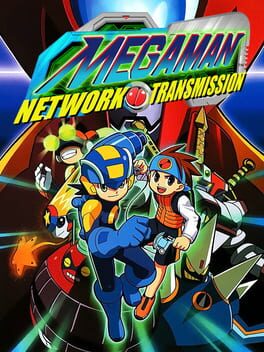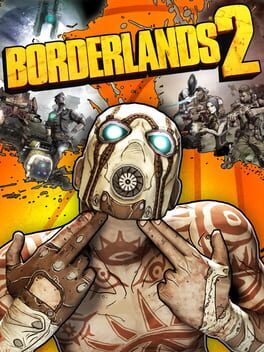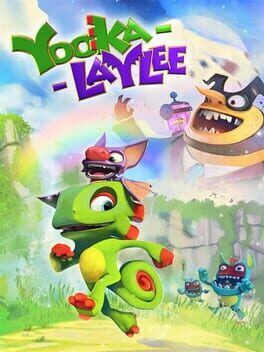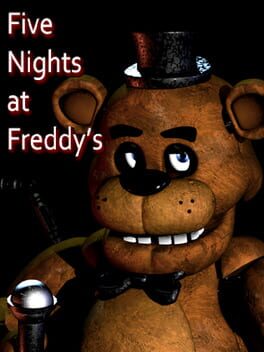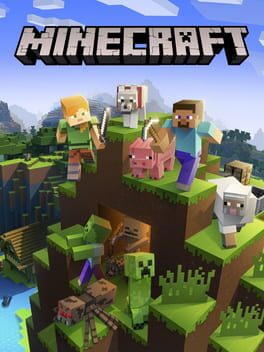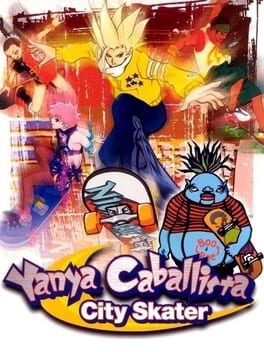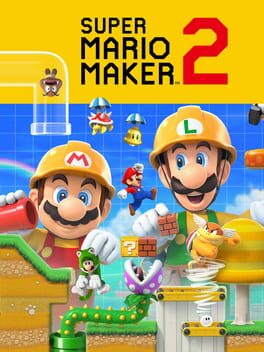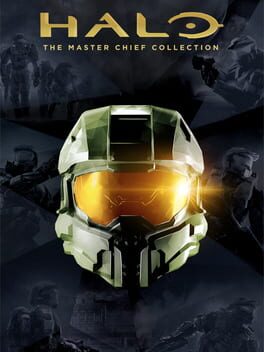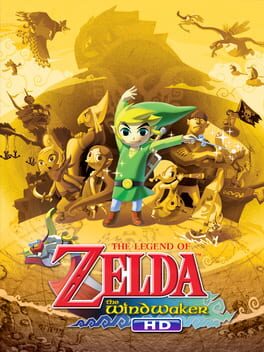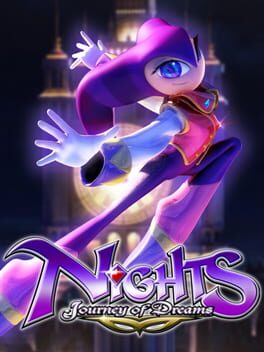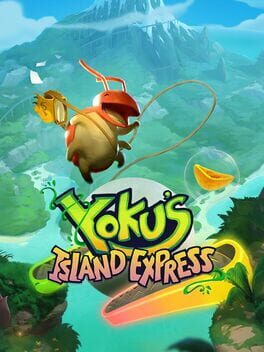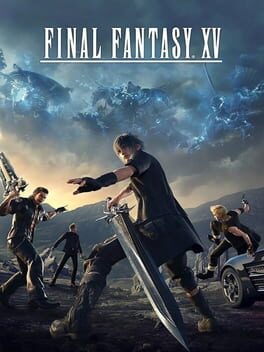ThruLidlessEye
This is probably the best 2.5D Mega Man game, definitely the most interesting.
Ever since the first game put the magnet beam in Elec Man's stage, behind an obstacle only Guts Man's weapon could move, Mega Man has been trying to balance catering to two completely different kinds of player. On one hand, they wanted a skilled player to be able to beat the original game in under an hour; on the other hand, they wanted casuals and newcomers to be able to experiment and take their time.
Kyle Bosman put out a whole video on the idea that a game being released with a rewind feature is functionally dead, not really viable as a product anymore, only kept around as a curiosity or for its important place in the history of either its franchise or games as a whole. I don't really agree with this, but I will admit that in the specific case of Mega Man, playing the "classic" games "as intended" is something bordering on unbearable, and nobody has actually done it in decades.
Every re-release of every classic 8-bit Mega Man game has added quality of life features, cheats, accessibility options, whatever you want to call them. Rapid fire, saved games to circumvent the password system, save states via both emulation and the "restore points" offered by the Virtual Console, and rewind. From Mega Man 3 onward there was almost no logic behind what bosses were weak to which weapons, or at the very least it was no longer something the player would be able to easily infer as in the earlier games. It has pretty much been expected for the past 20+ years that if you're playing a Mega Man game at all, you're going to be using a guide, and you're going to be superseding the base mechanics.
Keeping this in mind, Mega Man: Network Transmission is one of the more digestible games in the series. The RPG elements both give the player more room to grow, and provide a more clear "rock-paper-scissors" structure for boss weaknesses. Ever since Mega Man 2 let you kill some bosses in 3 hits or less, some players have complained that this "trivializes" the bosses; Network Transmission wants you to find ways to trivialize its bosses, even expecting you to rematch previously defeated foes until you can kill them efficiently enough. The game's levels inherit the meandering, exploratory nature of the handheld RPG's, with a more clear expectation of revisiting these levels than pretty much any of the mainline Mega Man platformers.
The way that they've adapted the card-based combat system of the Battle Network games to a 2D action game is interesting both because of what they changed, and what they didn't. Battle Network's engagements happen in a separate screen from navigation, usually with three enemies or fewer per encounter, so it only gives you a handful of attack options and refills the customization gauge after only a few seconds. Network Transmission's fights and traversal happen continuously and simultaneously, so the meter fills slow, and each chip has a certain amount of times it can be reused (based on how many you've picked up).
The first oddity of this system is that chip usage is also arbitrarily limited by a meter (a la spells requiring magic points); I genuinely cannot think of a single good reason for this. It just results in the player waiting, which they'll also be doing if they run out of chips and need to wait for the cust. gauge to fill. It's just more unneeded complexity. The second, probably the most unfortunate holdover from the handheld RPG's, is that the mega buster is basically completely useless until you're halfway through the game and collect enough upgrades. At this point, the buster is so strong that basically the only reason to use chips at all is that they don't need to charge, they fire immediately. All of your strong chips just become boss-killers, and all of your weaker chips become emergency tools for when you poorly anticipate a regular enemy and get stun-locked.
The soundtrack is great, the graphics and level themes are cute. I kind of like how you pick levels from a map, not just because it's how a lot of other Mega Man games handle level selection, but because it's kind of like how the Pokemon games on GameCube translated that handheld series to the big screen. The back of the box features the bold lie that the game has an "intricate story-line that ties in to the whole Mega Man Battle Network series"; not only is the story shallow, not only does it have virtually no bearing on the other games, the "whole Battle Network series" at the time of this game's release in North America was... two games.
Also the story contains this passage, which is hilarious now:
"Lan: Isn't a vaccine something like a medicine?
Dad: Yeah... I don't know if you're ready to learn about this yet, but... Vaccines, viruses, Navis, and chip data are all programs. So they can all be used for both good and bad things...
Lan: So there are good viruses too?
Dad: Hehe, well, I don't know about that... But a bad vaccine is conceivable."
Ever since the first game put the magnet beam in Elec Man's stage, behind an obstacle only Guts Man's weapon could move, Mega Man has been trying to balance catering to two completely different kinds of player. On one hand, they wanted a skilled player to be able to beat the original game in under an hour; on the other hand, they wanted casuals and newcomers to be able to experiment and take their time.
Kyle Bosman put out a whole video on the idea that a game being released with a rewind feature is functionally dead, not really viable as a product anymore, only kept around as a curiosity or for its important place in the history of either its franchise or games as a whole. I don't really agree with this, but I will admit that in the specific case of Mega Man, playing the "classic" games "as intended" is something bordering on unbearable, and nobody has actually done it in decades.
Every re-release of every classic 8-bit Mega Man game has added quality of life features, cheats, accessibility options, whatever you want to call them. Rapid fire, saved games to circumvent the password system, save states via both emulation and the "restore points" offered by the Virtual Console, and rewind. From Mega Man 3 onward there was almost no logic behind what bosses were weak to which weapons, or at the very least it was no longer something the player would be able to easily infer as in the earlier games. It has pretty much been expected for the past 20+ years that if you're playing a Mega Man game at all, you're going to be using a guide, and you're going to be superseding the base mechanics.
Keeping this in mind, Mega Man: Network Transmission is one of the more digestible games in the series. The RPG elements both give the player more room to grow, and provide a more clear "rock-paper-scissors" structure for boss weaknesses. Ever since Mega Man 2 let you kill some bosses in 3 hits or less, some players have complained that this "trivializes" the bosses; Network Transmission wants you to find ways to trivialize its bosses, even expecting you to rematch previously defeated foes until you can kill them efficiently enough. The game's levels inherit the meandering, exploratory nature of the handheld RPG's, with a more clear expectation of revisiting these levels than pretty much any of the mainline Mega Man platformers.
The way that they've adapted the card-based combat system of the Battle Network games to a 2D action game is interesting both because of what they changed, and what they didn't. Battle Network's engagements happen in a separate screen from navigation, usually with three enemies or fewer per encounter, so it only gives you a handful of attack options and refills the customization gauge after only a few seconds. Network Transmission's fights and traversal happen continuously and simultaneously, so the meter fills slow, and each chip has a certain amount of times it can be reused (based on how many you've picked up).
The first oddity of this system is that chip usage is also arbitrarily limited by a meter (a la spells requiring magic points); I genuinely cannot think of a single good reason for this. It just results in the player waiting, which they'll also be doing if they run out of chips and need to wait for the cust. gauge to fill. It's just more unneeded complexity. The second, probably the most unfortunate holdover from the handheld RPG's, is that the mega buster is basically completely useless until you're halfway through the game and collect enough upgrades. At this point, the buster is so strong that basically the only reason to use chips at all is that they don't need to charge, they fire immediately. All of your strong chips just become boss-killers, and all of your weaker chips become emergency tools for when you poorly anticipate a regular enemy and get stun-locked.
The soundtrack is great, the graphics and level themes are cute. I kind of like how you pick levels from a map, not just because it's how a lot of other Mega Man games handle level selection, but because it's kind of like how the Pokemon games on GameCube translated that handheld series to the big screen. The back of the box features the bold lie that the game has an "intricate story-line that ties in to the whole Mega Man Battle Network series"; not only is the story shallow, not only does it have virtually no bearing on the other games, the "whole Battle Network series" at the time of this game's release in North America was... two games.
Also the story contains this passage, which is hilarious now:
"Lan: Isn't a vaccine something like a medicine?
Dad: Yeah... I don't know if you're ready to learn about this yet, but... Vaccines, viruses, Navis, and chip data are all programs. So they can all be used for both good and bad things...
Lan: So there are good viruses too?
Dad: Hehe, well, I don't know about that... But a bad vaccine is conceivable."
2012
2016
2017
Kickstarter, am I right?
I haven't contributed to many Kickstart projects, and Yooka Laylee is not among those that I have, but I know what I'm getting into when I give money to these types of things. The end product always feels like something that wouldn't have happened if you hadn't pledged money years in advance, the corners are always cut wherever they possibly could have been. Kickstart a vinyl music release? Expect the disc to be paper thin. Kickstart a video game? Expect the finished product to feel like an over-polished beta release.
It's a little disappointing, but like many other high profile Kickstarter projects, Yooka Laylee is a spiritual successor to an established franchise spearheaded by industry veterans. I only decided to give this game another chance after years of considering it a total disappointment because I recently tried Donkey Kong 64 for the first time.
Compared to Donkey Kong 64 this is only slightly less directionless in its level design, though significantly less joyless in its character control. It isn't quite as utterly meritless as I once considered it, but this perspective only comes with the knowledge of just how bad it can get. The art direction is garish, the characters are terribly unappealing, the level design will have you questioning whether you're really taking the intended route (you probably are).
This doesn't feel like a throwback to late 90's platformers, this feels like a throwback to mid 00's direct-to-DVD 3D animated christian shows. I am the globglogabgalab. The schwabble dobble yeah, yeah, whatever, you get the idea. It's not very good, but it could be worse.
I haven't contributed to many Kickstart projects, and Yooka Laylee is not among those that I have, but I know what I'm getting into when I give money to these types of things. The end product always feels like something that wouldn't have happened if you hadn't pledged money years in advance, the corners are always cut wherever they possibly could have been. Kickstart a vinyl music release? Expect the disc to be paper thin. Kickstart a video game? Expect the finished product to feel like an over-polished beta release.
It's a little disappointing, but like many other high profile Kickstarter projects, Yooka Laylee is a spiritual successor to an established franchise spearheaded by industry veterans. I only decided to give this game another chance after years of considering it a total disappointment because I recently tried Donkey Kong 64 for the first time.
Compared to Donkey Kong 64 this is only slightly less directionless in its level design, though significantly less joyless in its character control. It isn't quite as utterly meritless as I once considered it, but this perspective only comes with the knowledge of just how bad it can get. The art direction is garish, the characters are terribly unappealing, the level design will have you questioning whether you're really taking the intended route (you probably are).
This doesn't feel like a throwback to late 90's platformers, this feels like a throwback to mid 00's direct-to-DVD 3D animated christian shows. I am the globglogabgalab. The schwabble dobble yeah, yeah, whatever, you get the idea. It's not very good, but it could be worse.
It's like Game & Watch: Ball but you have to expend a resource to see where the balls are or move your hands. I genuinely think the mechanics are interesting, and the setting and characters are certainly memorable, tapping into the natural uncanny valley of the real life equivalents of these kinds of mascot characters. I don't think it's a surprise that this caught on the way it did, but it isn't much more than a novelty.
2011
2011
2000
I got this game on a complete whim, I had never heard of it, I saw the box art, I saw a video of some gameplay, I thought it looked neat so I picked it up.
In a lot of ways this is almost a hidden gem. Visually it's an aesthetic treat, though the music is rarely more than serviceable. It's a skateboarding game where Earth has been invaded by aliens that can only be killed by skateboard tricks, a plot I'd expect from a game about a decade older. You spawn into a level, defeat a handful of aliens, a new area of the stage opens with a new handful of aliens; once all the aliens are defeated, the boss shows up and the entire level becomes the arena. With its several playable characters, unique controls, the way that levels progress, the secondary tutorial challenge mode, and a number of other factors like the setting and aesthetic, this feels less like a Jet Set Radio clone or even a spin on Tony Hawk, and moreso a completely unique take on skating that lands somewhere between Crazy Taxi and Katamari.
Before playing the game I had seen some comments online that the controls weren't particularly responsive, but I had expected that this would be the normal PS2-era flavor of jank that you would expect from a C-list extreme sports game. As soon as I cracked open the game's instruction manual I knew I was dead wrong. The game originally came with a Tech Deck-sized piece of plastic to attach to the PS2 controller's analog sticks. The entire game is meant to be played with just the sticks, L3, and R3, with the controller held sideways.
For the first few stages, the game's expectations in terms of time limit and trick execution are lenient enough that you could put up with the controls. Stage 4, Prison Island, takes a sharp turn that exposes virtually every fundamental flaw with the game.
Rail grinding had existed in every stage up until this point, but this is the first point in the game where it is explicitly required. Grinding in this game barely works. While the camera mostly acts the way that it would in Tony Hawk, i.e. staying right behind your skater, it hangs there a lot looser and while moving it drifts around, making it difficult to discern where in space you actually are, especially in midair. Most of the time when you try to grind you'll miss the rail entirely. The rest of the time you'll either slip off of it, or land on it as if it were normal ground.
This is also the first point in the game where landing combo tricks is explicitly required. Previous levels introduced enemies with larger health pools, but they could be ground down with a lot of individual tricks. Every enemy in the first sector of level 4 can only be damaged by combos. Combos here don't work like most other skating games, where the combo usually doesn't end until you touch the ground and revert back to regular movement. In Yanya, even if you do two tricks back-to-back in the air, they don't actually count as a combo unless you time them just right, and whether your timing is early or late will factor into what trick you actually do. Early tricks are the most desirable, but require you to spin (tilting the two analog sticks in opposite horizontal directions) and immediately, like, probably within 2 or 3 frames, do a different trick (by pressing L3 or R3). Everything about the combo system is unintuitive and unreliable.
This level also begins to put the absolute basics of the mechanics under stress. In games like Tony Hawk, you have a lot more buttons to work with, so each one can perform a consistent function. In Tony Hawk, the X button does an ollie, even if you're in midair; in fact, the game explicitly encourages you to wait until just after leaving the surface of a pipe to get maximum air for tricking. In Yanya, you only have two buttons, so they both have to pull double duty. The triangle button does a U-turn on the ground, and grab tricks in the air. The X button does an ollie on the ground, and flip tricks in midair. Before stage 4, the areas where the player is expected to jump are virtually always lined with ramps. In stage 4, the game starts to introduce more naturalistic environments that they expect you to traverse. The result is that you have these low-poly slopes where you're frequently leaving the ground in short bursts every time you pass over a seam in the level, you flip when you mean to ollie, and basic jumps become needlessly precise.
This is also the first level where running out of time is actually a meaningful threat. It's so weird how the "perfect run" was a self-imposed challenge in the original Tony Hawk games, and how so many games that took notes from them, including the modern remasters, make it a more explicit part of the experience. On the PS2 we see games like Yanya and Airblade give the player large levels that require complex tricks to complete, but unlike equivalent challenges in Tony Hawk they absolutely must be perfected in order to continue. It's a particular shame in the case of Yanya because not only are there more characters to unlock, every level apparently has a Celeste-esque "B-side" to play through. Airblade also hid a more traditional Tony Hawk-style arcade mode behind story mode completion, but Airblade's more fleshed-out world and more sophisticated controls made it worth unlocking. I don't think I can say the same for City Skater.
Did you know this was apparently made by Cave? What's up with that?
In a lot of ways this is almost a hidden gem. Visually it's an aesthetic treat, though the music is rarely more than serviceable. It's a skateboarding game where Earth has been invaded by aliens that can only be killed by skateboard tricks, a plot I'd expect from a game about a decade older. You spawn into a level, defeat a handful of aliens, a new area of the stage opens with a new handful of aliens; once all the aliens are defeated, the boss shows up and the entire level becomes the arena. With its several playable characters, unique controls, the way that levels progress, the secondary tutorial challenge mode, and a number of other factors like the setting and aesthetic, this feels less like a Jet Set Radio clone or even a spin on Tony Hawk, and moreso a completely unique take on skating that lands somewhere between Crazy Taxi and Katamari.
Before playing the game I had seen some comments online that the controls weren't particularly responsive, but I had expected that this would be the normal PS2-era flavor of jank that you would expect from a C-list extreme sports game. As soon as I cracked open the game's instruction manual I knew I was dead wrong. The game originally came with a Tech Deck-sized piece of plastic to attach to the PS2 controller's analog sticks. The entire game is meant to be played with just the sticks, L3, and R3, with the controller held sideways.
For the first few stages, the game's expectations in terms of time limit and trick execution are lenient enough that you could put up with the controls. Stage 4, Prison Island, takes a sharp turn that exposes virtually every fundamental flaw with the game.
Rail grinding had existed in every stage up until this point, but this is the first point in the game where it is explicitly required. Grinding in this game barely works. While the camera mostly acts the way that it would in Tony Hawk, i.e. staying right behind your skater, it hangs there a lot looser and while moving it drifts around, making it difficult to discern where in space you actually are, especially in midair. Most of the time when you try to grind you'll miss the rail entirely. The rest of the time you'll either slip off of it, or land on it as if it were normal ground.
This is also the first point in the game where landing combo tricks is explicitly required. Previous levels introduced enemies with larger health pools, but they could be ground down with a lot of individual tricks. Every enemy in the first sector of level 4 can only be damaged by combos. Combos here don't work like most other skating games, where the combo usually doesn't end until you touch the ground and revert back to regular movement. In Yanya, even if you do two tricks back-to-back in the air, they don't actually count as a combo unless you time them just right, and whether your timing is early or late will factor into what trick you actually do. Early tricks are the most desirable, but require you to spin (tilting the two analog sticks in opposite horizontal directions) and immediately, like, probably within 2 or 3 frames, do a different trick (by pressing L3 or R3). Everything about the combo system is unintuitive and unreliable.
This level also begins to put the absolute basics of the mechanics under stress. In games like Tony Hawk, you have a lot more buttons to work with, so each one can perform a consistent function. In Tony Hawk, the X button does an ollie, even if you're in midair; in fact, the game explicitly encourages you to wait until just after leaving the surface of a pipe to get maximum air for tricking. In Yanya, you only have two buttons, so they both have to pull double duty. The triangle button does a U-turn on the ground, and grab tricks in the air. The X button does an ollie on the ground, and flip tricks in midair. Before stage 4, the areas where the player is expected to jump are virtually always lined with ramps. In stage 4, the game starts to introduce more naturalistic environments that they expect you to traverse. The result is that you have these low-poly slopes where you're frequently leaving the ground in short bursts every time you pass over a seam in the level, you flip when you mean to ollie, and basic jumps become needlessly precise.
This is also the first level where running out of time is actually a meaningful threat. It's so weird how the "perfect run" was a self-imposed challenge in the original Tony Hawk games, and how so many games that took notes from them, including the modern remasters, make it a more explicit part of the experience. On the PS2 we see games like Yanya and Airblade give the player large levels that require complex tricks to complete, but unlike equivalent challenges in Tony Hawk they absolutely must be perfected in order to continue. It's a particular shame in the case of Yanya because not only are there more characters to unlock, every level apparently has a Celeste-esque "B-side" to play through. Airblade also hid a more traditional Tony Hawk-style arcade mode behind story mode completion, but Airblade's more fleshed-out world and more sophisticated controls made it worth unlocking. I don't think I can say the same for City Skater.
Did you know this was apparently made by Cave? What's up with that?
2019
There's something sad about Super Mario Maker 2. The fact that U Deluxe sold twice as many copies, the fact that the game is basically dead just a few years later; the fact that even though you can collect levels into "worlds" to be played like a fan-made Mario "game", you can't download them or play them offline. The original Mario Maker was in some ways more exciting, but was obviously hampered by being a relatively late release on a console that nobody bought. There are some good additions here, but enough is discarded from the previous game that it still feels like it has less heart. As a platform for creative game design and sharing, it's not anywhere near as feature-rich and user-friendly as I would like. In a way, it almost feels more like a tactic to divert attention away from the rom-hack and fan-game communities that have always been around. I've had a lot of fun with it, but even though it's still here, it feels like the moment has passed.
Halo, as a whole, is mediocre, if inoffensively so.
I remember watching a friend of mine from down the street play the first two Halo games on PC, he preferred to drive the tank with a flightstick. I remember playing the Halo 3 coop with my neighbor when I was in middle school, playing the multiplayer on a tiny CRT at an acquaintance's house in high school. While I was in college my friends and I would regularly gather at someone's house to play the maps he had made in various Halo games' Forge mode; he would draw these maps out on graph paper while we ate together at restaurants and mall food courts. For a long time, I only ever played Halo as a social activity, in short bursts, and never really got a feel for what any particular game in the series was like.
In 2015, I bought an Xbox One for the sole purpose of playing games with my friends who also had an Xbox. It came with Halo: MCC, a digital copy. My parents' internet at the time was so slow that I had to bring my console and a small TV to my aforementioned Forge friend's house to use his internet to download the game.
Since then I've tried time and time again to play these games and I always bounce off of them, hard.
Levels feel like copy and pasted pre-fabs, their structure feels completely directionless. Despite the game being a fairly linear, narrative driven sequence that often consists of literal hallways, I find myself getting lost about as often as the first time I played Doom. The purpose of objects and settings is never clear, nothing is interesting, everything is just sleek metal walls and plain grassy hills. Everything about the story and setting feels like it should be minimal set dressing to focus on action, but the serious tone of dialogue and the epic score make it all seem pretentious. Halo takes the plodding narrative focus of a game like Half Life, but goes one step further to interject cutscenes between the action, but the story is just plain boring, and the action isn't even any good.
Every enemy takes a ludicrous amount of time and shots to kill. Simple things like moving and shooting never feel satisfying. Master Chief never feels unstoppable, he feels pathetically slow and weak compared to nearly every other recognizable FPS player character I can think of. The gameplay additions in the sequels and the further expanding story are, past a certain point, often just different enough to disappoint some fans, though it never goes far enough to interest me.
Halo is, in every way, more shallow than its predecessors in the FPS genre, yet instead of giving an appropriately snappy rhythm, it slows to a crawl, demanding more time for less action. It blares Skyrim-esque chants and orchestral arrangements in your ear to let you know its all actually very important.
It's not quite accurate to say that I don't understand Halo's appeal, it's just that to me the things that draw people in seem like little more than cheap tricks.
I don't think I will ever spend the time to review any of these games individually.
I remember watching a friend of mine from down the street play the first two Halo games on PC, he preferred to drive the tank with a flightstick. I remember playing the Halo 3 coop with my neighbor when I was in middle school, playing the multiplayer on a tiny CRT at an acquaintance's house in high school. While I was in college my friends and I would regularly gather at someone's house to play the maps he had made in various Halo games' Forge mode; he would draw these maps out on graph paper while we ate together at restaurants and mall food courts. For a long time, I only ever played Halo as a social activity, in short bursts, and never really got a feel for what any particular game in the series was like.
In 2015, I bought an Xbox One for the sole purpose of playing games with my friends who also had an Xbox. It came with Halo: MCC, a digital copy. My parents' internet at the time was so slow that I had to bring my console and a small TV to my aforementioned Forge friend's house to use his internet to download the game.
Since then I've tried time and time again to play these games and I always bounce off of them, hard.
Levels feel like copy and pasted pre-fabs, their structure feels completely directionless. Despite the game being a fairly linear, narrative driven sequence that often consists of literal hallways, I find myself getting lost about as often as the first time I played Doom. The purpose of objects and settings is never clear, nothing is interesting, everything is just sleek metal walls and plain grassy hills. Everything about the story and setting feels like it should be minimal set dressing to focus on action, but the serious tone of dialogue and the epic score make it all seem pretentious. Halo takes the plodding narrative focus of a game like Half Life, but goes one step further to interject cutscenes between the action, but the story is just plain boring, and the action isn't even any good.
Every enemy takes a ludicrous amount of time and shots to kill. Simple things like moving and shooting never feel satisfying. Master Chief never feels unstoppable, he feels pathetically slow and weak compared to nearly every other recognizable FPS player character I can think of. The gameplay additions in the sequels and the further expanding story are, past a certain point, often just different enough to disappoint some fans, though it never goes far enough to interest me.
Halo is, in every way, more shallow than its predecessors in the FPS genre, yet instead of giving an appropriately snappy rhythm, it slows to a crawl, demanding more time for less action. It blares Skyrim-esque chants and orchestral arrangements in your ear to let you know its all actually very important.
It's not quite accurate to say that I don't understand Halo's appeal, it's just that to me the things that draw people in seem like little more than cheap tricks.
I don't think I will ever spend the time to review any of these games individually.
The Legend of Zelda: The Wind Waker is uhh.... remember that ad where the guy's enunciation implied that Zelda was the wind waker? Or... I can't find it online, have I been Berenstein'ed? Anyway...
The gameplay loop of Wind Waker is defined by two elements: it is a game that, moreso than any other 3D Zelda, is returning to the roots of the series, and it is a game that was rushed to meet a deadline with gaping holes barely patched up. The result, somehow, is a game that feels shockingly similar to the modern open-world game in terms of structure. Somehow too, it took only a few small changes in this more recent version to make Wind Waker one of the best open-world games ever made, if it is to be considered a part of the genre.
Wind Waker HD is flat out the best looking Zelda game, and it will probably continue to be the best looking Zelda game even after the release of the presently untitled sequel to Breath of the Wild, both because of its superior fidelity and its incredible aesthetic. Games like Four Swords Adventures and Minish Cap already felt so full-fledged that rather than the top-down games feeling like de-makes of Wind Waker, the original Wind Waker instead felt like the impossible, imagined, ideal version of its 2D contemporaries; the resolution bump and new lighting system may be a substantial enough change to alienate purists, but I think these additions are for the better.
Wind Waker's aesthetic was originally more of a point of contention, and frankly it's not hard to see why. Something important to keep in mind is that even though Ocarina of Time obviously had an art style influenced by its concept illustrations, just check out what's sitting next to it in the top rated games of all time on Metacritic; Tony Hawk 2 and Soul Caliber, games which today would not even be remotely considered the best in their series, let alone contenders for best game ever. The truth is that these games were so well-received in large part because they were some of the first games to showcase realistically proportioned human figures. The visuals of Ocarina of Time, in 1998, could pass for "realistic". This is the exact reason why some will look at games like Dark Souls and exclaim "this is what Zelda should've looked like!" Though, in the same sense of course, it should be noted that Zelda was always going for a more or less illustrative aesthetic, and that while Wind Waker was certainly a shift in style, it wasn't as large a leap as many may have felt it was at the time.
Wind Waker is one of the best feeling 3D Zelda games to play. The way that it handles is more fluid than any other game in the series, and while I may personally prefer the slight amount of friction and additional complexity that Twilight Princess added to the mix, I think that this effortless feeling is completely appropriate for this game's cartoon vibe.
Toon Link is basically the best character Nintendo has made since at least the turn of the millennium, and he is unambiguously without a shred of doubt the best incarnation of Link. Not only is he stupid cute, he is more physically expressive and consistently shows a much wider range of emotions than most cute Nintendo characters ever would. It's like if Pikachu did the Excalibur face, real ones will know what I'm talking about.
My biggest issue with the game, and perhaps the only thing that really keeps it from being a 10/10, is how reluctant it is to just let you go out and do stuff. You can't freely explore until you've cleared two of the game's relatively few dungeons. You can't fast-travel until you have the item from the third dungeon. Even then, tons of the optional areas require that you have items or abilities from late enough in the game that, aside from filling out the map so you know where everything is (and hitting the submarines and outposts for the handful of items hidden there), there's not much reason to explore a lot of the map until the late-game. It has pretty much the opposite structural problem as Breath of the Wild: they take too long to truly let you loose, and they don't fill out your toolset fast enough.
Also Breath of the Wild has ruined the koroks. :( they are yucky now :((((
The gameplay loop of Wind Waker is defined by two elements: it is a game that, moreso than any other 3D Zelda, is returning to the roots of the series, and it is a game that was rushed to meet a deadline with gaping holes barely patched up. The result, somehow, is a game that feels shockingly similar to the modern open-world game in terms of structure. Somehow too, it took only a few small changes in this more recent version to make Wind Waker one of the best open-world games ever made, if it is to be considered a part of the genre.
Wind Waker HD is flat out the best looking Zelda game, and it will probably continue to be the best looking Zelda game even after the release of the presently untitled sequel to Breath of the Wild, both because of its superior fidelity and its incredible aesthetic. Games like Four Swords Adventures and Minish Cap already felt so full-fledged that rather than the top-down games feeling like de-makes of Wind Waker, the original Wind Waker instead felt like the impossible, imagined, ideal version of its 2D contemporaries; the resolution bump and new lighting system may be a substantial enough change to alienate purists, but I think these additions are for the better.
Wind Waker's aesthetic was originally more of a point of contention, and frankly it's not hard to see why. Something important to keep in mind is that even though Ocarina of Time obviously had an art style influenced by its concept illustrations, just check out what's sitting next to it in the top rated games of all time on Metacritic; Tony Hawk 2 and Soul Caliber, games which today would not even be remotely considered the best in their series, let alone contenders for best game ever. The truth is that these games were so well-received in large part because they were some of the first games to showcase realistically proportioned human figures. The visuals of Ocarina of Time, in 1998, could pass for "realistic". This is the exact reason why some will look at games like Dark Souls and exclaim "this is what Zelda should've looked like!" Though, in the same sense of course, it should be noted that Zelda was always going for a more or less illustrative aesthetic, and that while Wind Waker was certainly a shift in style, it wasn't as large a leap as many may have felt it was at the time.
Wind Waker is one of the best feeling 3D Zelda games to play. The way that it handles is more fluid than any other game in the series, and while I may personally prefer the slight amount of friction and additional complexity that Twilight Princess added to the mix, I think that this effortless feeling is completely appropriate for this game's cartoon vibe.
Toon Link is basically the best character Nintendo has made since at least the turn of the millennium, and he is unambiguously without a shred of doubt the best incarnation of Link. Not only is he stupid cute, he is more physically expressive and consistently shows a much wider range of emotions than most cute Nintendo characters ever would. It's like if Pikachu did the Excalibur face, real ones will know what I'm talking about.
My biggest issue with the game, and perhaps the only thing that really keeps it from being a 10/10, is how reluctant it is to just let you go out and do stuff. You can't freely explore until you've cleared two of the game's relatively few dungeons. You can't fast-travel until you have the item from the third dungeon. Even then, tons of the optional areas require that you have items or abilities from late enough in the game that, aside from filling out the map so you know where everything is (and hitting the submarines and outposts for the handful of items hidden there), there's not much reason to explore a lot of the map until the late-game. It has pretty much the opposite structural problem as Breath of the Wild: they take too long to truly let you loose, and they don't fill out your toolset fast enough.
Also Breath of the Wild has ruined the koroks. :( they are yucky now :((((
2016
4 annoying boys who don't even kiss each other go on a road trip peppered with sidequests meticulously placed to lead you to dungeons containing cool macguffins that ultimately don't matter. The combat plays itself, the story has no good sense of pace, the world is mostly empty, the load times are abysmal even on PC with the game installed on an SSD. There's been a lot of content added to the game after launch but everything falls into one of two categories: stuff I don't know how to access, and stuff I don't know when I should do it or how it fits into the rest of the game. I beat it once one PS4 in 2017, and I've tried to get back into it now that we know there isn't going to be any more story DLC, but I just don't think I have the patience for it. There are things to like about it, but they are all bogged down by a complete lack of a good structure to hold it together.
